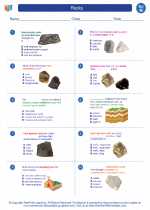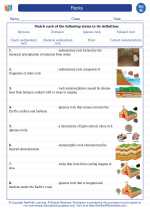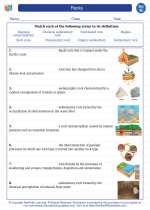Brass
Brass is a metallic alloy made of copper and zinc. It is commonly used in musical instruments, decorative items, and plumbing fixtures due to its malleability, durability, and attractive gold-like appearance.
Composition
The composition of brass can vary, but it is typically made up of around 70-90% copper and 10-30% zinc. The addition of zinc gives brass its distinctive properties, such as increased strength and corrosion resistance.
Properties
Brass has several important properties:
- Malleability: Brass can be easily shaped and formed into various objects, making it a popular choice for decorative items and musical instruments.
- Durability: It is resistant to corrosion and has a long lifespan, making it suitable for outdoor applications and plumbing fixtures.
- Attractive Appearance: Brass has a warm, golden color that makes it aesthetically pleasing for decorative purposes.
- Conductivity: It is a good conductor of both heat and electricity, allowing it to be used in electrical components and fittings.
Uses
Brass is used in a wide range of applications, including:
- Musical Instruments: Brass instruments such as trumpets, trombones, and saxophones are made from brass due to its malleability and acoustic properties.
- Decorative Items: Brass is often used to make ornaments, jewelry, and home decor items due to its attractive appearance.
- Plumbing Fixtures: Its corrosion resistance makes brass a popular choice for plumbing fittings and valves.
- Electrical Components: Brass is used in electrical connectors, switches, and terminals due to its conductivity.
Study Guide
Here are some key points to remember about brass:
- Brass is an alloy of copper and zinc.
- It is malleable, durable, and has an attractive golden color.
- Brass is used in musical instruments, decorative items, plumbing fixtures, and electrical components.
- Its composition typically ranges from 70-90% copper and 10-30% zinc.
- Brass has good corrosion resistance and conductivity.
Remember to study the properties, composition, and uses of brass to have a comprehensive understanding of this important alloy.
[Brass] Related Worksheets and Study Guides:
.◂Science Worksheets and Study Guides Eighth Grade. Rocks
Worksheet/Answer key Rocks
Rocks  Worksheet/Answer key
Worksheet/Answer key Rocks
Rocks  Worksheet/Answer key
Worksheet/Answer key Rocks
Rocks  Vocabulary/Answer key
Vocabulary/Answer key Rocks
Rocks  Vocabulary/Answer key
Vocabulary/Answer key Rocks
Rocks  Vocabulary/Answer key
Vocabulary/Answer key Rocks
Rocks 

 Worksheet/Answer key
Worksheet/Answer key
 Worksheet/Answer key
Worksheet/Answer key
 Vocabulary/Answer key
Vocabulary/Answer key
 Vocabulary/Answer key
Vocabulary/Answer key
 Vocabulary/Answer key
Vocabulary/Answer key

The resources above cover the following skills:
Earth/Space Science: Students will use scientific skills and processes to explain the chemical and physical interactions (i.e., natural forces and cycles, transfer of energy) of the environment, Earth, and the universe that occur over time.
Earth History: Explain how sedimentary rock is formed periodically, embedding plant and animal remains and leaving a record of the sequence in which the plants and animals appeared and disappeared.
Explain how sedimentary rock buried deep enough may be reformed by pressure and heat and these reformed rock layers may be forced up again to become land surface and even mountains.